SHARES
| FacebookTwitter |
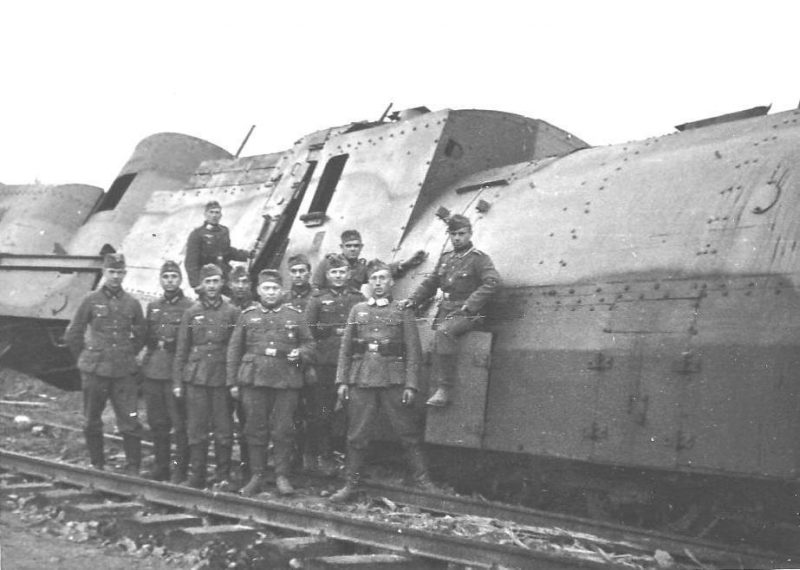
Now the world has turned it’s attention on South-Western Poland in the hunt for the Lost Nazi (Armored) Train, let us take a look at armored trains that were used during WWI and WWII.
Early in the 20th century, Russia used armored trains during the Russo-Japanese War. armored trains went on to see use during the Mexican Revolution and World War I. The most intensive use of armored trains was during the Russian Civil War. The Spanish Civil War saw a little use of armored trains, though World War II saw more. The French used them during the First Indochina War, and a number of countries had armored trains during the Cold War. The last combat use appears to have been during the Yugoslav wars of the 1990s.
German BP 42 armored train on the Eastern Front, 1942- 1943
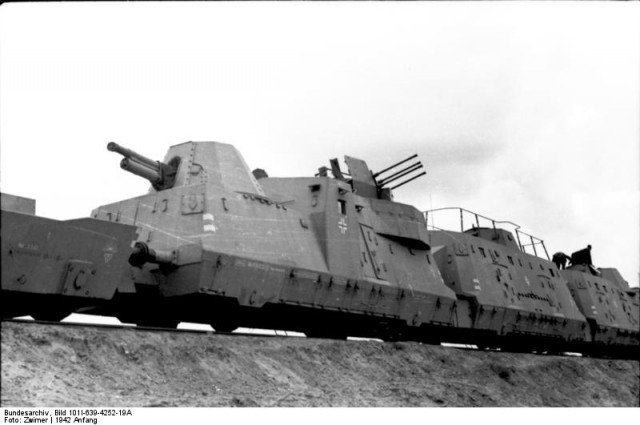 ww2db / Bundesarchiv
ww2db / BundesarchivThis early Polish train, Smialy, is one of the most famous of the era. The rotating turret on the front helped clear out anything that got in the way.
 Wikimedia Commons
Wikimedia CommonsHere is another shot of Smialy. It was captured by Poland in 1919 but was used in both wars by four different nations: Austria, Poland, the USSR, and Germany.
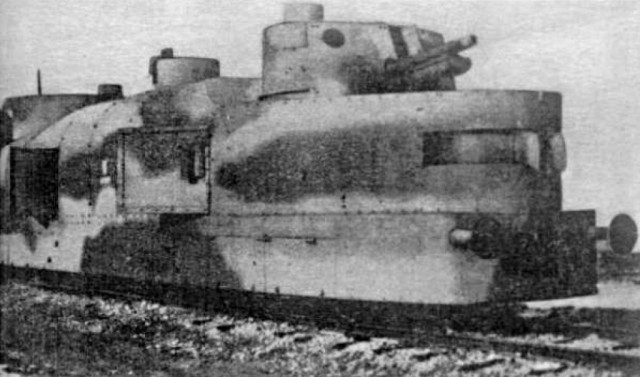 Wikimedia Commons
Wikimedia CommonsExtensive armor plating could withstand a lot of punishment.
 Wikimedia Commons
Wikimedia CommonsEach nation’s trains were an imposing force.
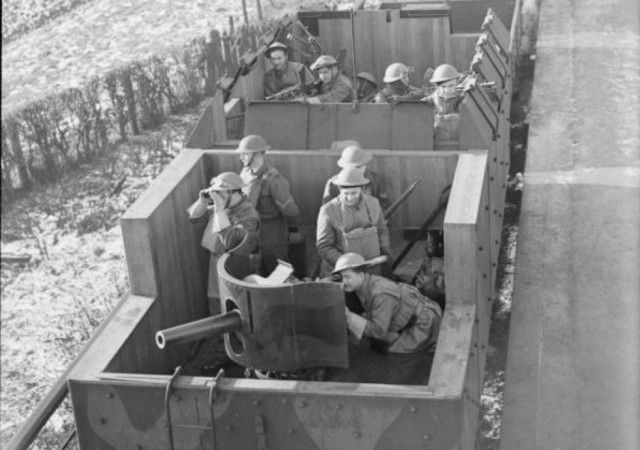 Wikimedia Commons
Wikimedia CommonsOver time, the compartments for the soldiers became increasingly secure. This one resembles a fortress.
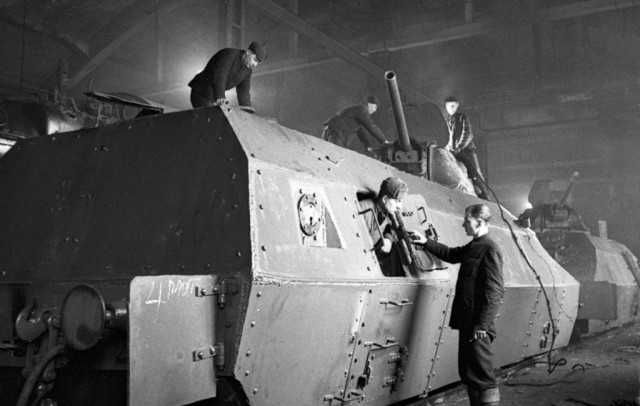 Wikimedia Commons
Wikimedia CommonsThe Danuta, in 1939
 Wikimedia Commons
Wikimedia CommonsFrom the left: artillery wagon, infantry assault wagon, armored locomotive, artillery wagon
Polish Artillery Car in 1939
 Wikimedia Commons
Wikimedia CommonsAustro-Hungarian armored train from 1915
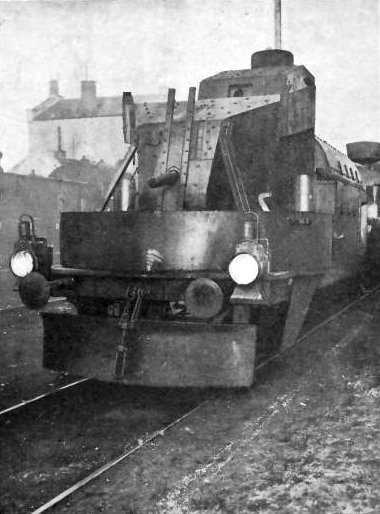 Wikimedia Commons
Wikimedia CommonsSoviet armored train, circa 1941
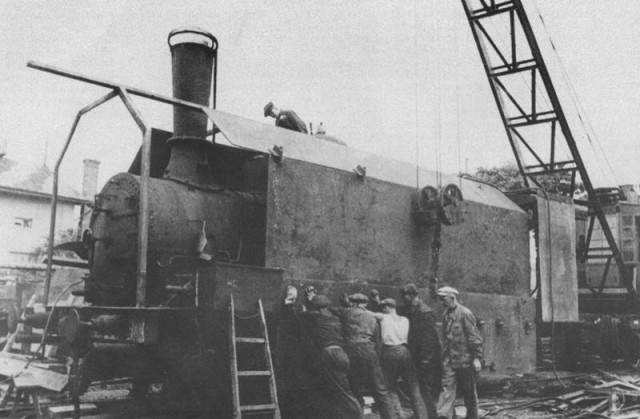 ww2db
ww2dbThere was no job too big or too small. Anti-aircraft weaponry was common on many of these trains.
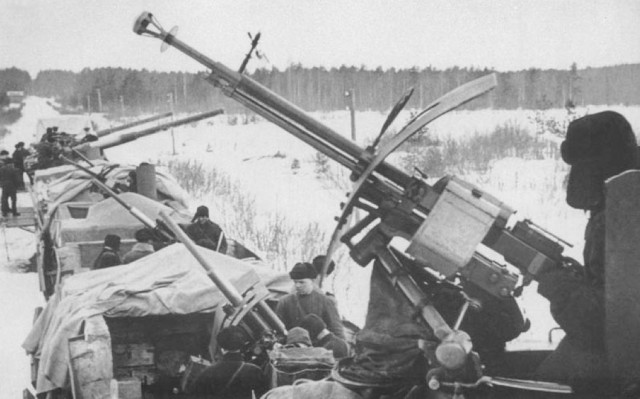 Wikimedia Commons
Wikimedia CommonsSome of the cannons on these locomotives appear to be a size that would be more appropriate for a battleship.
 Wikimedia Commons
Wikimedia CommonsRussian workers building an armored train, 1941
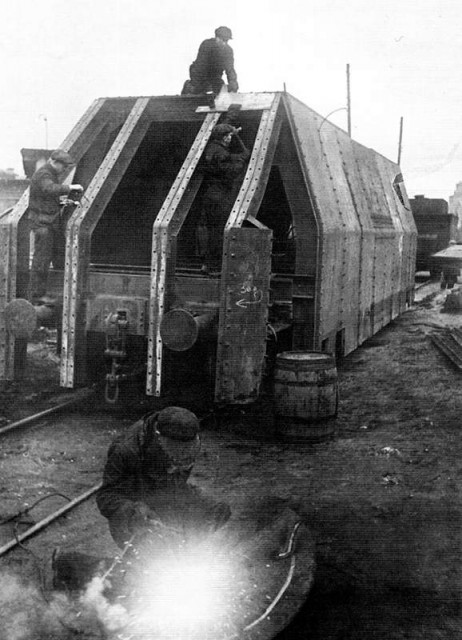 ww2db
ww2dbThe main issue with these trains was that they ran on tracks. Derailments and fires were their Achilles’ heel.
 Wikimedia Commons
Wikimedia CommonsDuring WWII, the Germans derailed this Polish train with a bomb dropped by the Luftwaffe. It was deserted as the German soldiers neared.
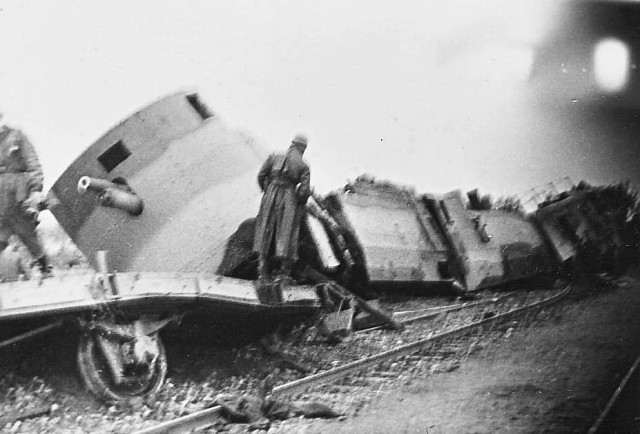 Wikimedia Commons
Wikimedia CommonsAnother shot of the carnage.
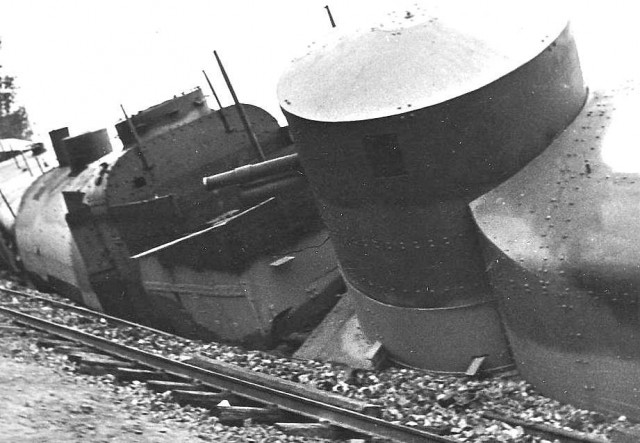 Wikimedia Commons
Wikimedia CommonsThe wartime role of trains has not been totally forgotten. Some remain in museums around the world.
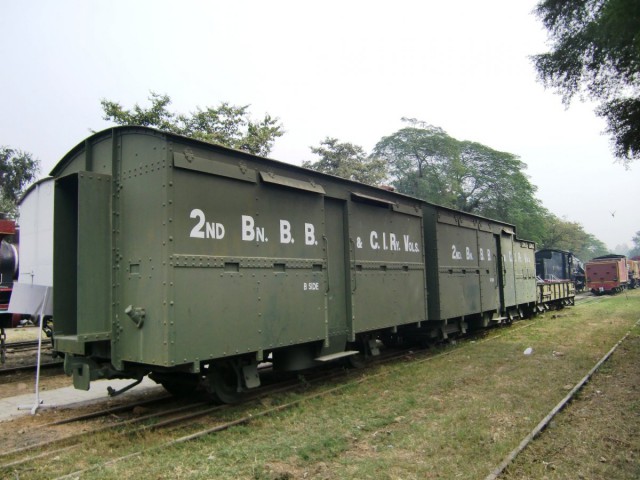 Wikimedia Commons
Wikimedia CommonsSome of the trains are still on display, in Poland.

Panzertriebwagen Nr 16 (PzTrWg 16 or PT 16)
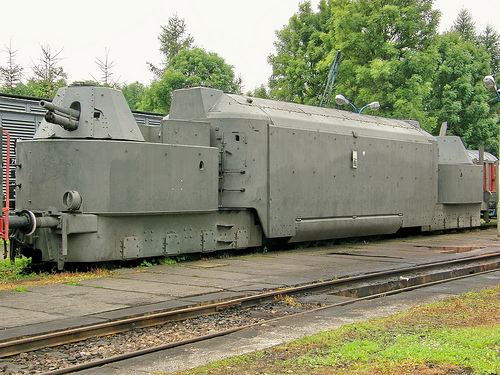
German heavy armored motorcar built in 1942 by Schwarzkopff company. Based on WR550 D14 diesel locomoive, surrounded by armor and with two armored units added at each end. Initially armed with 2 cm Flakvierling 38 AA guns, later replaced (after additional modifications to the units) with russian 76,2 mm FK 295/1 gun-equipped turrets. Armor thickness was from 31 to 84 mm. Fought on Eastern Front. In 1943 as a reserve unit used to patrol guerilla-threatened areas. In 1944 assigned to Army Group Mitte, fought in Rawa Ruska and Lublin, later in Kielce surroundings. Withdrawn to Gliwice for repairs, was finally repaired in Germany. In 1945 took part in combat near Neuruppin, and was finally captured intact on 2nd May 1945 at Neustadt Dosse.
Incorporated into the structures of Polish Army, served in no. 4194 unit, as a part of an armored train. In 1945-47 took part in fights with Ukrainian UPA partisans at Bieszczady area. Later stored on a siding at Przemyśl, before becoming part of Warsaw Railway Museum. (Source)
A tank bolted on a German armored train
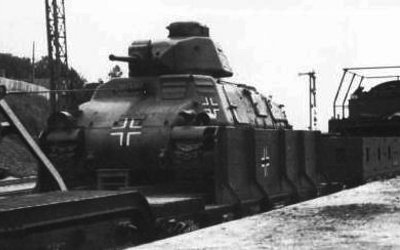
Red Army officer observing from an armored train
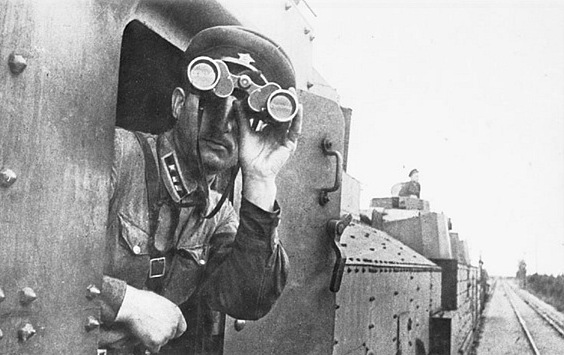 ww2db
ww2dbPV-1 machine gun aboard a Soviet armored train, Nov 1941
 WW2db
WW2dbDamaged Polish Armored Train
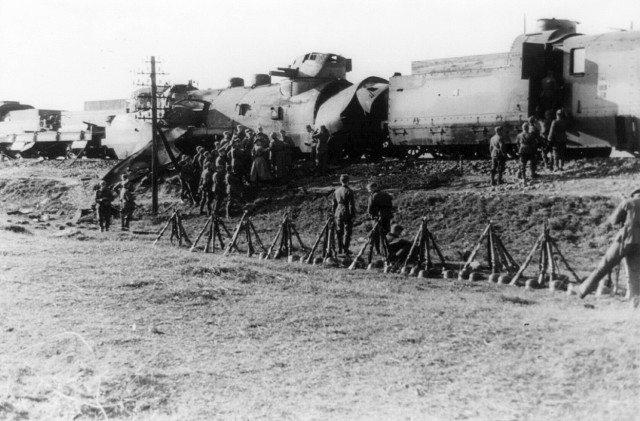 WW2db
WW2dbThis is is a replica of a Slovakian armored train, now situated near Zvolen, Slovakia.
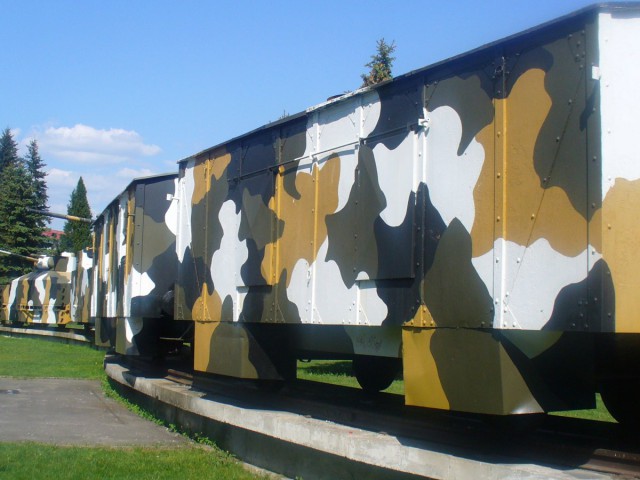 Wikimedia Commons
Wikimedia Commons Wikimedia Commons
Wikimedia CommonsLast us of an armored train: Krajina Express
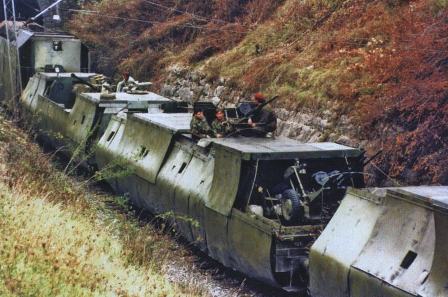
The Krajina Express was an improvised armored train used by the Krajina Serb army during the Croatian War of Independence and the Bosnian War, from 1991 to 1995. The main battle in which the train became involved was the siege of Bihać. The train’s crew also performed in combat in the role of infantry.
ICBM Trains
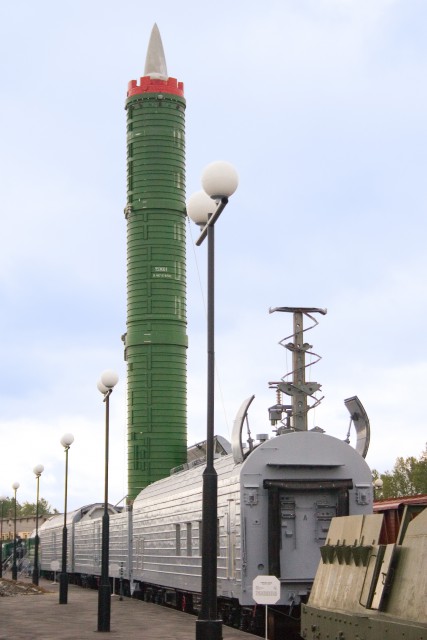 Wikimedia commons
Wikimedia commonsTowards the end of the Cold War, both superpowers began to develop railway-based ICBMs mounted on armoured trains; the Soviets deployed the SS-24 missile in 1987, but budget costs and the changing international situation led to the cancellation of the programme, with all remaining railway-based missiles finally being deactivated in 2005. Pictured is a RT-23 Molodets in the Saint Petersburg railway museum.

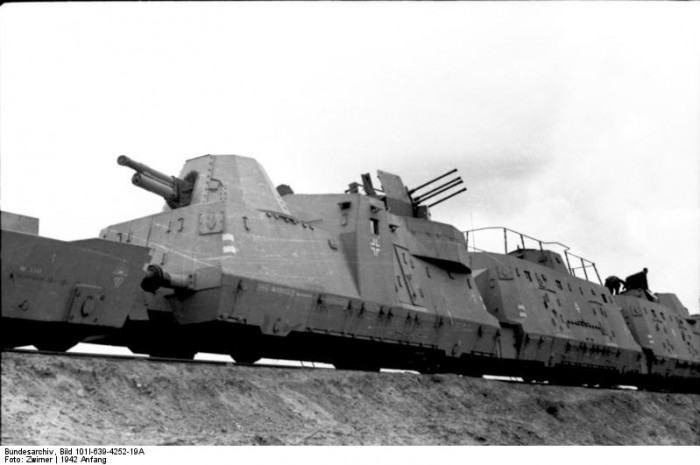
Δεν υπάρχουν σχόλια:
Δημοσίευση σχολίου